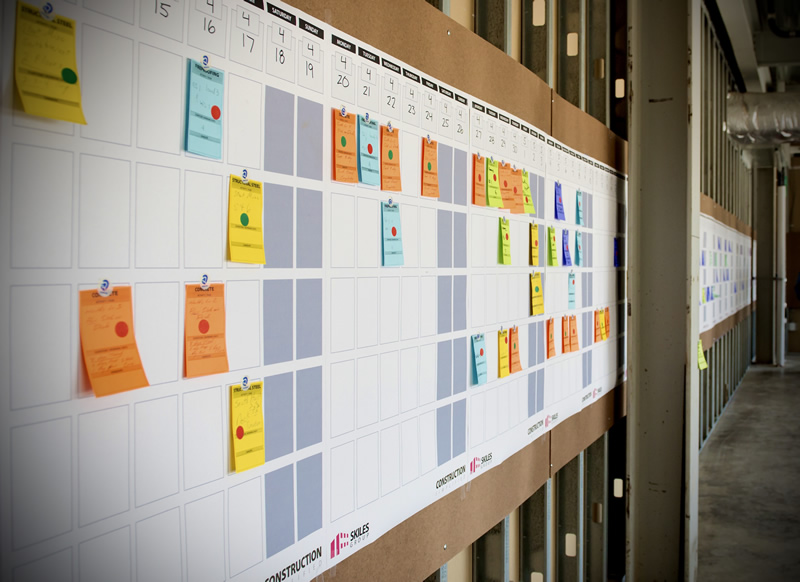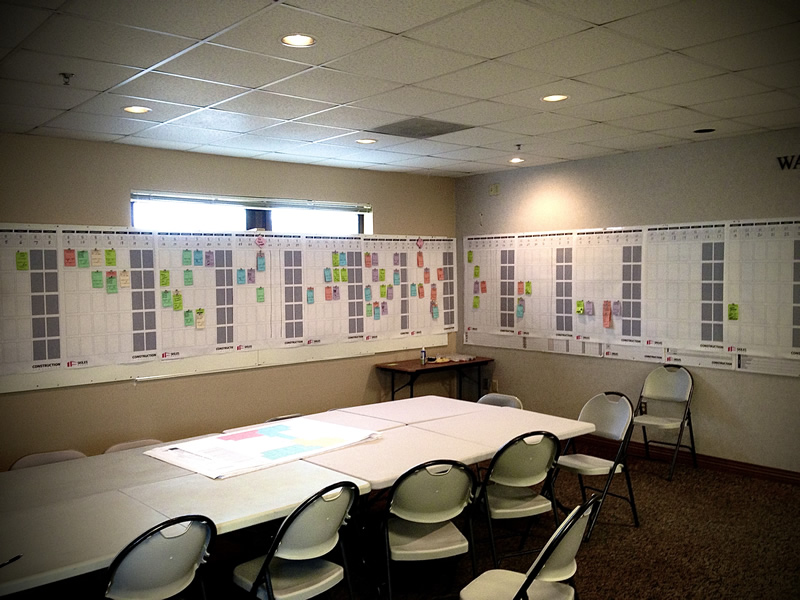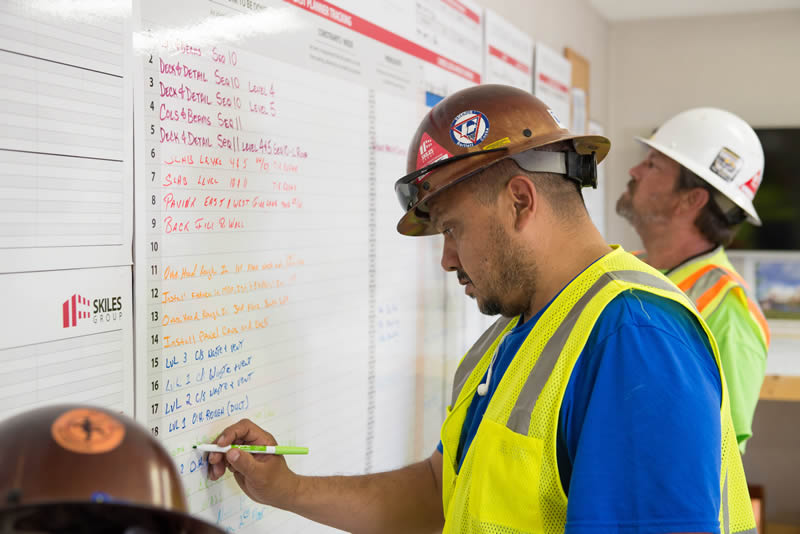If you are looking to start your journey with the Last Planner System and believe your team is ready to start phase planning via pull plan sessions, please review our post 4 Helpful Hints Before You Pull Plan before you start. If you are looking for a quick refresher the day of your pull planning session, please read our post 4 Best Practices for Your Next Pull Plan Session. But if you’ve come here because you have executed your pull planning session but have struggled with the discipline and follow through it takes to capture and distribute the information collected in the session, then this blog post is for you.
After the Pull Planning Session:
- It will take some time to document the cards and incorporate the dates back into the master schedule. Best practice is to do this with the superintendent(s) and project management team working together. We suggest capturing this information directly after the pull plan. We’ve seen teams have great success in the pull meeting only to fail at execution because they did not update their master schedule or distribute the information pulled via Look-Ahead Planning (6 Week Schedule).
- Once the master schedule has been updated with the pull plan schedule, the master schedule should be sent to all trade partners with the photographs of the pull plan cards to review for any questions or clarifications. This step serves as a double-check to ensure the information on the cards was captured correctly. If there are questions or concerns, it is good practice to hold a follow-up meeting to walk through the logic a final time. The more buy-in the trades have upfront the better the execution in the field.
- Look-Ahead Planning is the next step in The Last Planner System, and it is important that the general contractor issue a six-week look-ahead on a weekly basis, starting directly after each milestone pull session. This will allow the trade partners to fill out the Three-Week Look-Ahead board accurately. Remember, the first three-week look-ahead durations should tie back to the six-week look-ahead, and the six-week look-ahead should tie back to the pull plan commitments.
Something to consider:
The most “un-Lean” thing about pull planning with stickies is the duplicative step of taking the information from the sticky cards and putting them into a format to easily distribute electronically. I can’t tell you how many times our teams had trouble deciphering what was written on the cards. Cloud-based pull plan technology, such as Touchplan, QLean, and Oracle alleviate this rework and immediately allow project teams to quickly distributed the information directly after the pull plan session.
If you are wondering how to pull plan while we are in the pandemic, please read 3 Ways to Pull Plan during the COVID-19 Pandemic. Lean culture relies on sharing lessons learned and offering help to others on their journey. We would love to hear what is working well for you on your projects, so please share any pull plan-related tips or ideas in the comments.
By: Keyan Zandy, COO
Skiles Group
For more from Keyan, see The Lean Builder – A Builder’s Guide to Applying Lean Tools in the Field or Connect with Keyan on LinkedIn.
More Pull Planning Blogs
7 Steps for Successful Last Planner Pull Planning











